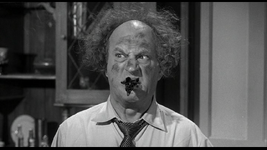Bronze Lifetime
- Messages
- 4,917
- Reactions
- 12,968
Case head expansion, from serious over-pressure. A cartridge case is a precisely engineered thing; during manufacture the brass is worked repeatedly from a brass cup into what it becomes. The base is hard from the forming process, while the body and neck are annealed and soft.
The neck needs to be soft to expand and seal the gas, while the base needs to be hard to withstand the high pressure. The base is never supposed to expand, but it will if the pressure is way too high, or if somehow it got annealed, or was too soft from manufacture. I'm surprised that the primers pockets aren't loose.
I saw something very similar once, a long time ago. I had helped a friend get setup in reloading, but it was a year or two between the time I coached him through his first box, and the time he got around to loading more, and apparently he forgot the part about making sure the H4831 settles fully in the powder measure, and checking weights with his scale. Instead he just adjusted the measure to the max charge and only weighed the first couple throws, then went to town throwing directly from the measure into his .300 Win Mag cases, not realizing that as the powder settled, his cases were more and more over-charged. He contacted me wondering why his brass wouldn't resize.
The neck needs to be soft to expand and seal the gas, while the base needs to be hard to withstand the high pressure. The base is never supposed to expand, but it will if the pressure is way too high, or if somehow it got annealed, or was too soft from manufacture. I'm surprised that the primers pockets aren't loose.
I saw something very similar once, a long time ago. I had helped a friend get setup in reloading, but it was a year or two between the time I coached him through his first box, and the time he got around to loading more, and apparently he forgot the part about making sure the H4831 settles fully in the powder measure, and checking weights with his scale. Instead he just adjusted the measure to the max charge and only weighed the first couple throws, then went to town throwing directly from the measure into his .300 Win Mag cases, not realizing that as the powder settled, his cases were more and more over-charged. He contacted me wondering why his brass wouldn't resize.















